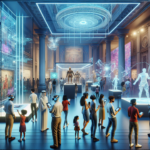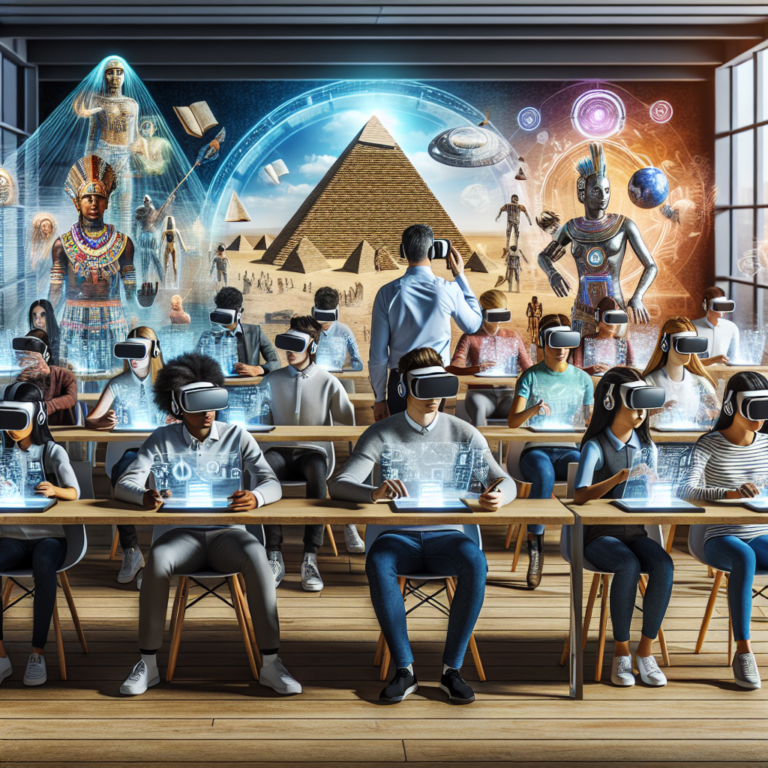immersive education technologies : The Marvel of Immersive Technologies in Education
The Dawn of a New Educational Era 🌅
immersive education technologies : In recent years, educational systems around the globe have begun embracing a transformation that reshapes how learning is experienced. At the forefront of this revolution are immersive technologies such as Virtual Reality (VR), Augmented Reality (AR), and Mixed Reality (MR). These cutting-edge tools are not just enhancing learning; they are fundamentally changing how students engage with content, paving the way for a more interactive and effective educational experience.
Understanding Immersive Technologies
Before diving into the impact on education, it’s essential to grasp what technologies entail:
- Virtual Reality (VR): Creates a completely digital environment that can simulate real-world settings, allowing learners to explore spaces they might never visit in person.
- Augmented Reality (AR): Overlays digital content onto the real world, enhancing the physical environment with interactive elements.
- Mixed Reality (MR): Combines both VR and AR, where real and digital objects co-exist and interact in real time.
immersive education technologies : Enhancing Engagement and Interactivity 🎮
The most significant impact of immersive technologies in classrooms is undoubtedly the boost in student engagement. Traditional learning methods, while effective, often fail to capture the attention of today’s tech-savvy youth. By introducing immersive experiences, educators can transform passive learning into an active exploration, driving curiosity and interest.
immersive education technologies : Exploring Ancient Civilizations
Imagine a history lesson on Ancient Egypt that allows students to virtually walk through the Pyramids or interact with holographic representations of famous figures from that era. This experience can significantly increase students’ connection to the material, making history come alive in a way that textbooks simply cannot.
Fostering Collaboration and Communication 🤝
Immersive technologies not only enhance individual learning experiences but also foster collaboration and communication among students. Through VR simulations, learners can interact with peers globally, working on joint projects, engaging in brainstorming sessions, or participating in game-based learning activities, all of which promote teamwork and social skills.
Example: Virtual Classrooms
Virtual classrooms not only allow students from different locations to come together in a shared space, but also help overcome geographical barriers. In addition, these environments can simulate real-life scenarios, thereby enabling students to collaborate on scientific experiments, conduct mock debates, or even role-play historical events.
Personalized Learning Experiences 🎓
Every student learns differently; therefore, immersive technologies provide opportunities for personalized learning experiences. By adapting lessons to suit individual needs and preferences, educators can thus ensure that each student progresses at their own pace and style. For example, some ways this personalization occurs include
- Adaptive Learning Pathways: AI-driven platforms can assess a student’s understanding and adapt the curriculum accordingly, providing additional support or challenges.
- Self-Paced Learning Environments: Students can explore content at their own speed, revisiting complex concepts as needed without the pressure of a traditional classroom setting.
- Gamification: Integrating game elements into lessons can motivate students, making learning fun and rewarding.
Bridging the Gap Between Theory and Practice 🔧
Another significant advantage of immersive technologies in education is their ability to bridge the gap between theory and practice. Many fields, such as medicine, engineering, and architecture, benefit immensely from hands-on experience, which can be facilitated through VR and AR simulations.
Example: Medical Training
In medical education, VR simulations allow students to practice complex surgical techniques in a risk-free environment. This hands-on approach not only enhances their skills but also boosts their confidence before they encounter real-life patients.
Cost-Effective Learning Solutions 💡
Many educators may be concerned about the perceived high costs associated with implementing immersive technologies. However, over time, these tools prove to be a cost-effective solution for education. Here’s how:
- Reduced Travel Costs: Field trips can be expensive and logistically challenging. Virtual excursions provide an affordable alternative.
- Resource Efficiency: With digital learning materials, schools can save on traditional textbook costs and ensure that students always have access to the latest information.
- Scalability: Once developed, immersive content can be used repeatedly, reaching a larger number of students without significant added costs.
Overcoming Challenges and Considerations
While the integration of immersive technologies in education offers endless possibilities, it is not without its challenges. Key factors include:
- Access and Equity: Not all students have access to the necessary devices or high-speed internet required for immersive experiences, creating potential inequalities.
- Training for Educators: Teachers must be adequately trained in using these technologies to maximize their effectiveness in the classroom.
- Content Development: High-quality immersive content must be developed and continually updated to keep pace with educational standards.
The Future of Education is Immersive 🔮
As technology continues to advance, the integration of immersive technologies in classrooms will only become more refined and widespread. From enhancing student engagement to enabling personalized learning and bridging theory with practice, immersive technologies hold the key to a brighter future for education.
The journey is just beginning, and as educators, students, and technology developers work hand in hand, we can expect to see a remarkable transformation that truly revolutionizes the learning experience for generations to come.




0 Comments